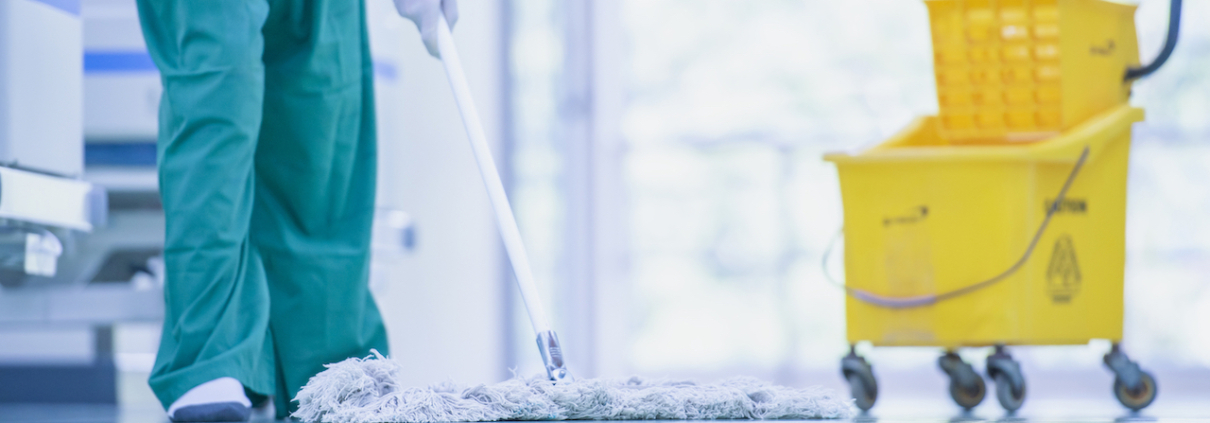How UK Hospitals Can Stop the Spread of Covid to Inpatients
A recent report found that more than 40,600 people were likely infected with Covid-19 while being treated in hospital in England for another reason.
What can hospitals do to protect their inpatients from infection?
In this post we’ll explore some of the measures hospitals can adopt to stop the spread of Covid, and other viruses.
Standard Infection Control Precautions
The Standard Infection Control Precautions (SICPs) are a series of practices every member of staff in every care setting must adopt to reduce the risk of infection.
SICPs include, but are not limited to:
- Patient Placement – You must assess every patient’s infection risk as soon as they arrive, and continuously review their risk throughout their stay. You should isolate any patients who show a high risk of cross-infection as soon as they arrive.
- Hand Hygiene – There’s a specific hand hygiene technique designed to clean your hands as thoroughly as possible. You should perform this technique before you touch a patient; after you touch a patient; after you touch a patient’s immediate surroundings; before you undertake any clean or antiseptic procedures; and after any body fluid exposure risk.
- Respiratory and Cough Etiquette – All staff should adopt best practice techniques, and encourage patients to do the same through providing ample tissues, hand hygiene facilities, and plastic bags for disposal.
- Safe Waste Disposal – Each healthcare setting should have four separate waste streams with a different colour coding for each. For example, you should use yellow bags to demarcate any waste that carries a risk of infection, contamination, or other forms of harm.
For more, read a full guide to all 10 SICPs.
Personal Protective Equipment (PPE)
PPE protects both staff and patients from infection. It does this through acting as a barrier against common sources of infection, including coughs, sneezes, and bodily fluids.
For effective infection control, you should follow certain PPE protocols:
- Store all PPE in a clean and dry area that’s close to the point of use.
- Ensure all PPE is single-use only, unless specified by the manufacturer.
- Put on and take off PPE in a specific order, practicing best practice hand hygiene techniques between each step.
- Change PPE immediately after seeing each patient. You should also change your PPE immediately after performing each task or procedure.
- Correctly dispose of all PPE immediately after use in the correct waste stream.
You should also ensure that the PPE you use is suitable for the task at hand. You can read our full guide to when and what type of PPE to use.
We also have a detailed guide to the factors you should consider when choosing PPE for your healthcare setting.
Cleaning for Infection Prevention and Control
Surgical site infections (SSIs) account for around 20% of total hospital-acquired infections. The risk of infection is at its highest during the operative procedure when the patient’s wounds are still open.
Common sources of infection include members of the operating team, the clothes they wear, the operating theatre environment, and the equipment used during the procedure.
All hospitals should have clear guidelines in place for keeping operating theatres aseptic, sterile, and restricted. These guidelines might include:
- Thoroughly cleaning any reusable surgical instruments before use, and storing them in a sterile environment until they’re required.
- Regular floor and surface cleaning – including the use of absorbent mats to capture fluids for safe disposal after procedures.
- Effective zoning of the operating theatre complex based on the levels of cleanliness, the presence of microorganisms, and the types of procedures carried out.
You can read our complete guide to cleaning for infection control in operating theatres.
Air Filtration for Infection Control
A recent University of Cambridge study found that an air filtration system in a Covid-19 ward successfully removed almost all traces of the airborne virus.
Different areas of a hospital will have different air filtration requirements. Waiting rooms and other public areas will need a good supply of clean air to prevent the spread of infection among staff and inpatients, for example. And as we’ve seen, operating theatres and other treatment areas will have much more substantial air filtration needs, with a set number of air changes per hour (ACH).
You can read our full guide to air filtration systems in hospitals.
We Can Help You Control and Prevent Infection in Your Hospital
Our range of HealthProtect air purifiers are specifically designed for hospitals and other healthcare settings.
The BlueAir HealthProtect 7740i Air Purifier can deliver complete filtration every 12.5 minutes in rooms as large as 62m². Its filters can trap up to 99.97% of particles down to 0.1 microns, and up to 99% of viruses and bacteria – including the Covid-19 virus.
We also provide air purifiers for larger areas and smaller rooms.
Want to talk about how we can help reduce air pollute and improve the air quality in your hospital? Get in touch to talk to one of our air purification experts today.



